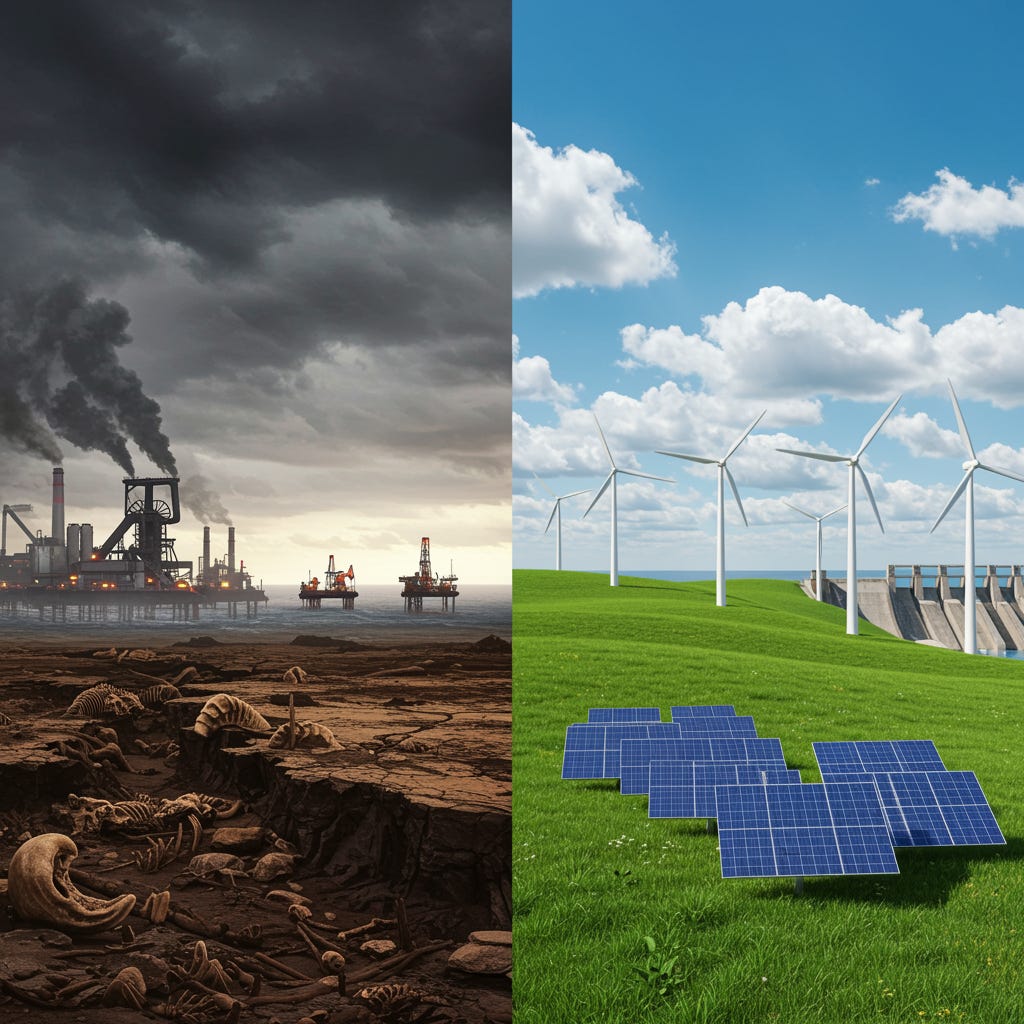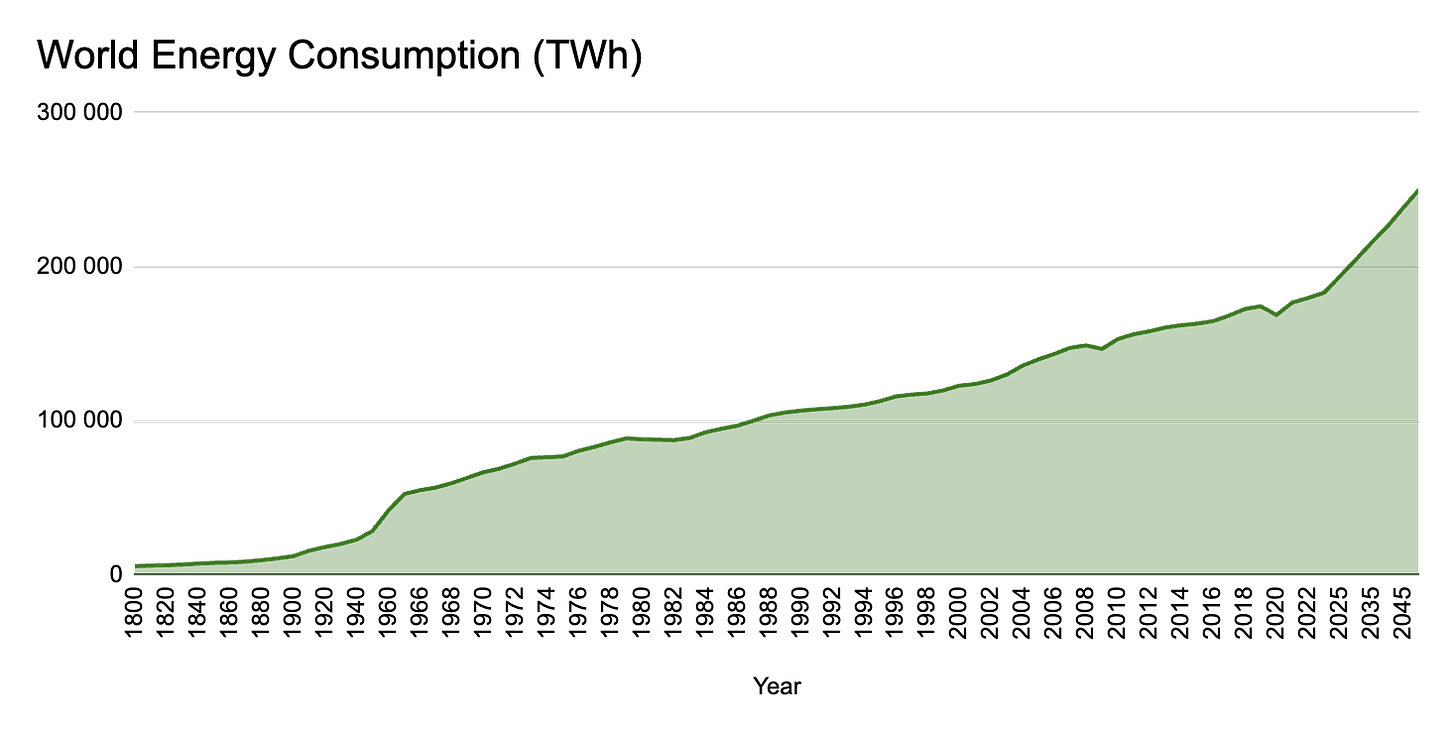Fossils vs. renewables in the global energy mix
Progress of the energy transition
It’s all about energy. Energy drives the world, there is no progress possible without it. The fact that there seems to be ever growing demand for energy can make the sector attractive for the investors.
We are in the midst of the ongoing energy transition with renewables replacing fossil gradually. (At least this is what we hear from mainstream media.)
So how should we invest into the energy sector?
Is fossil dead?
Are we late with investing into renewables?
Does it all change now with the “drill, baby, drill” policy?
Or with the recent geopolitical trends?
These are valid questions to clarify.
I am starting a series of posts where I take a deep dive into the energy sector to provide a compass for investors, answering above questions and identifying potential opportunities.
In the first issue of the series, let’s take a closer look at the global energy mix.
Energy sector segmentation
First of all, let’s do the segmentation to understand what to analyze.
Non-renewable
Fossil
Oil and gas
Petroleum products and oil
Natural gas
Gasoline
Diesel fuel
Heating oil
Coal
Nuclear
Renewable
Hydropower
Biofuels, such as ethanol
Wind power
Solar power
Hydroelectric
World energy consumption
Now, if we look at the world (primary)1 energy consumption, we can see the ever growing demand justified. There are some temporary drops in consumption, the latest one was in 2020, in the year of COVID, but otherwise steady increase. In 2023, the primary energy consumption was 183 230 TWh. The annual growth has been around 1.35 % in average in the last 10 years. According to forecasts, it continues to grow at a slightly lower pace (around 1.03% average) until 2050.
It means we will need around 40% more energy in 2050 than today’s consumption. This is huge. And it may rather be a down-to-earth scenario, there are forecasts saying we will need double amount of energy in 2050 compared to what we use today.
Source: Our World in data, Statista
Energy mix
So it seems the world continues to hunger for more and more energy in the next 25 years. Let’s now take a look at the energy mix, what sources the demand is served from.
Source: Our World in data
In 2023 it looked like this:
Oil: 31.64%
Coal: 26.35%
Natural gas: 23.29%
Nuclear power: 4.09%
Hydro: 6.28%
Wind: 3.60%
Solar: 2.52%
Biofuels: 0.78%
Other: 1.44%
So in 2023, global fossil energy consumption was 81.28% and with including nuclear, non-renewable accounted for 85.37%, renewable was at 14.63%
Long long way to go for full energy transition by 2050.
Energy profile of the top 5 countries
Source: Our World in data
From above we can conclude that the top 5 countries’ consumption accounts for 50% (!) of the world’s total energy consumption.
And this is how their energy mix was progressing in the period 2000-2023.
Source: Our World in data
The trends in the energy mix for these countries are of course matching the overall global trends: decreasing share of fossils, increasing share of clean energy (nuclear is also considered clean energy).
Ok, so can we conclude that the demand for fossil is shrinking and for renewables it is increasing like hell?
Well, not that fast…
Growth in energy demand by source
Growing energy demand means in absolute terms growing demand for all energy sources as it is shown in the chart below.
Source: Our World in data
With temporary drops in the years of the global financial crisis (2008-2009) and COVID (2020), demand for fossil fuel was also growing constantly.
In fact, in the period of 2021-2023, the change (growth) in fossil demand outpaced the demand for renewals (2024 data not yet available). In 2021 the growth in fossil demand was 4x (!) of the growth in renewables.
So fossil is NOT dead, far from that… Rather on the contrary.
OK, but why is that?
Mainly for two reasons:
Developing countries: moving from agricultural to industrialized, their need for energy increases and the access to affordable energy sources becomes a key to growth. Fossil is cheaper than the other types.
Energy security: in order to be able to serve the minimum demand for energy at any given time, our grids are designed for baseload. Baseload is the permanent minimum load that a power supply system is required to deliver. Baseload power accounts for most of the electricity we use. Baseload demand is growing e.g. we need to power AI data centers. Baseload capacity cannot run on intermittent (=renewable) energy sources. To be fair there is a new concept called Flexible Power production that could (?) eliminate the baseload concept. This will take a lot of time to develop and whether it is possible physically and makes sense financially, it is a question that I will look into in one of the next issues.
Key takeaways
Constantly growing energy consumption - the world will need around 40% more energy in 2050 than today’s consumption
Energy consumption from non-renewable (fossil + nuclear) sources still accounts 85% of the total global consumption
Growing demand for both fossil and renewables which is driven by the cheap energy needs by developing countries and the growing baseload power capacity needs
Transition away from fossil fuel will take time
Primary energy (PE) is the energy found in nature that has not been subjected to any human engineered conversion process, in other words all natural energy sources in their original and unaltered form










Really interesting stats, thanks for sharing!